
Thousands of birds fill the air over Mono Lake, banking and swooping in a swirling murmuration that resembles an aerial school of fish. As they sweep past, their beating wings whoosh in unison.
This small species, the Wilson's phalarope, arrives from the north in large numbers each summer to feed at the saline lake, preparing for a long journey to South America.
After spending July gorging on the larvae of alkali flies, the birds are gradually departing this month to begin their migration to another saline lake about 6,000 miles away — Laguna Mar Chiquita in Argentina.
Partly because of their remarkable transcontinental voyage between salt lakes, the grayish birds have inspired a close partnership between communities in California and Argentina.
Conversations that began among biologists working on bird counts have grown into flourishing bonds among residents, educators and students who see the birds as a graceful symbol of their sister lakes.
Groups of high school students have traveled from the town of Lee Vining, which overlooks Mono Lake, to the giant lake surrounded by farmlands in Argentina. Argentine students have come to California to see the birds and explore their habitat at the base of the Sierra Nevada.
In honor of the Wilson’s phalarope, or falaropo tricolor in Spanish, an artist painted matching murals beside the two lakes. A Mono Lake environmental group printed phalarope T-shirts. And enthusiasts even organized a phalarope festival, where guitar-strumming musicians sang a song in English and Spanish celebrating the far-traveling species.
“The bird is what brought us together,” said Yessenia Martínez, a 20-year-old graduate of Lee Vining High School who visited Argentina last summer with five other students in the exchange program, supported by conservation groups.
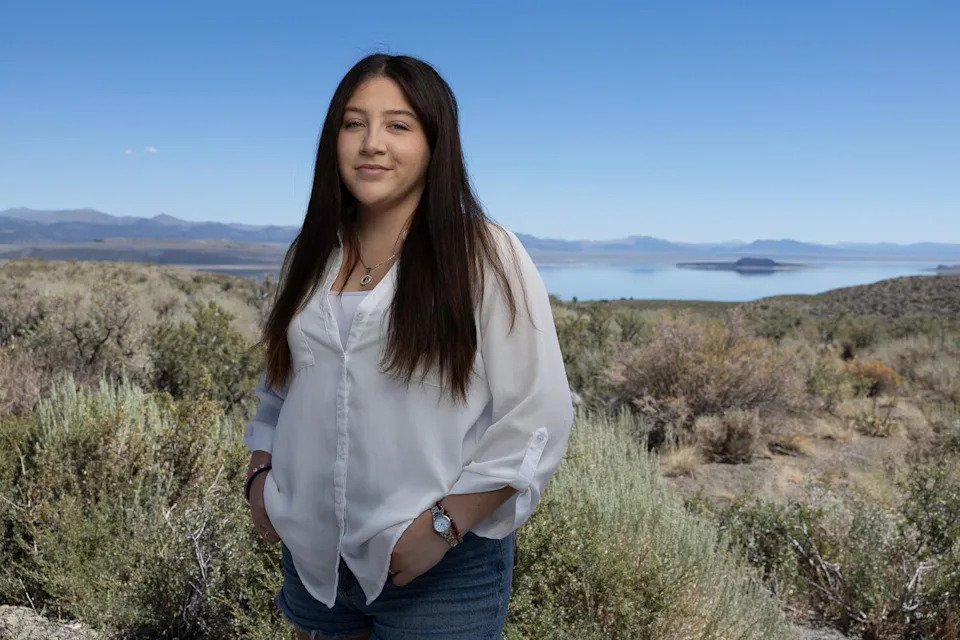
Martínez said she enjoyed trying Argentine specialties including empanadas and yerba mate and also came away with a deep fascination for Wilson’s phalaropes.
The phalaropes, a member of the sandpiper family named after ornithologist Alexander Wilson, spend much of their lives foraging at a network of saline lakes across the Americas that are increasingly threatened by water use and worsening drought intensified by climate change.
Martínez, now a sophomore at Cal State Long Beach, said learning about the phalaropes prompted her to change her major from interior design to zoology.
“I want to come back and be able to research this specific bird,” she said. “That's my main goal, to be able to do that and take care of it here in my town, in my home.”
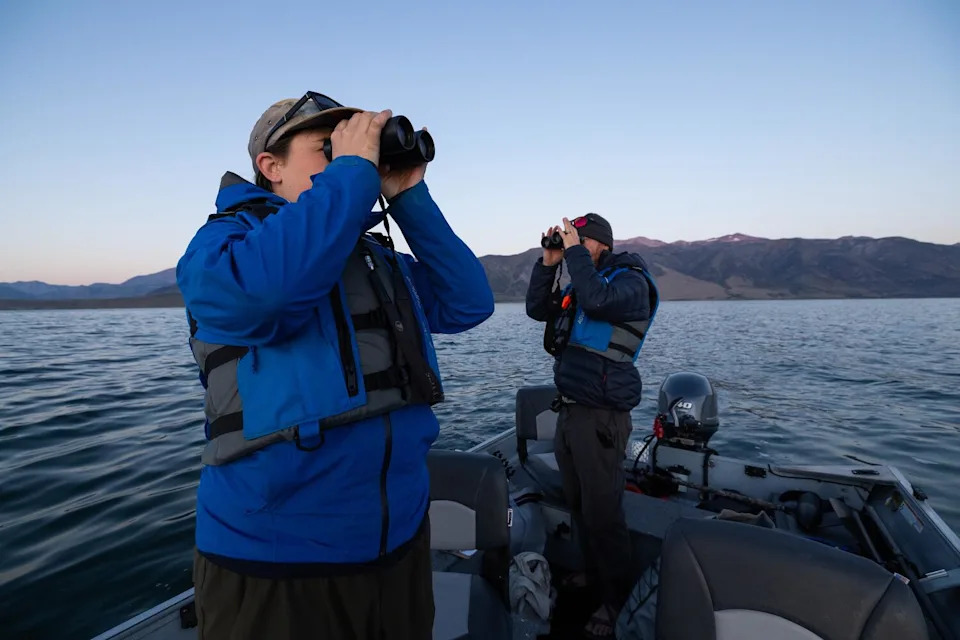
Standing on the shore of Mono Lake, Ryan Carle focused his binoculars on phalaropes floating on the water. Many were motionless, while others perched on rocks preening their feathers.
“It looks like the siesta time of day,” said Carle, science director of the nonprofit Oikonos Ecosystem Knowledge.
Carle, an ornithologist who grew up in Lee Vining, first got to know the lake’s birds through his parents, who were rangers at the Mono Lake Tufa State Natural Reserve.
In the last several years, he and other scientists have been tracking the phalaropes across the hemisphere.
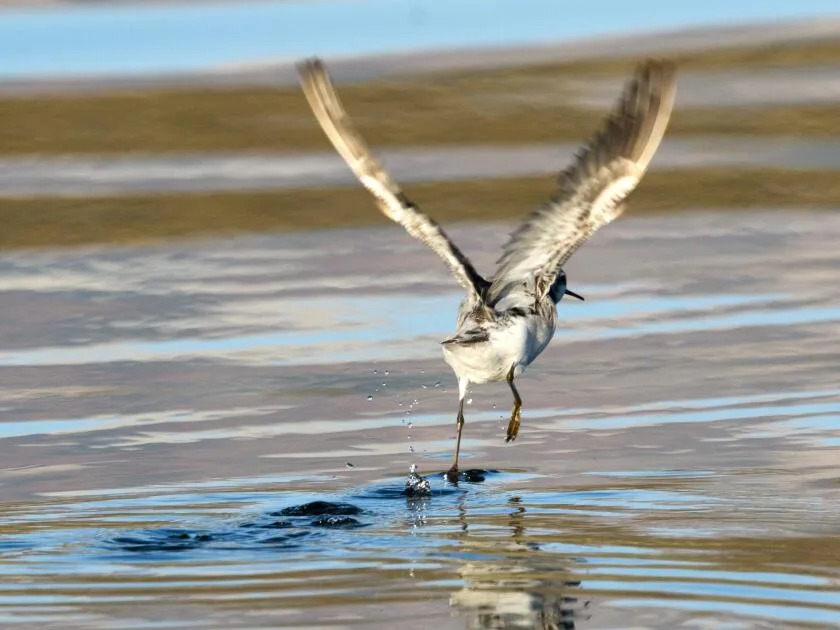
He has observed them nesting on prairies in Canada, hearing their muffled honks. And he has seen them descend on Mono Lake when the water is teeming with brine shrimp and the larvae and pupae of alkali flies.
To feed, each bird spins on the surface, kicking water outward to create a whirling upwelling that brings morsels to its needle-like bill.
“They're just a magical bird,” Carle said. “They have a lot of personality.”
Their distinctive circling inspired a T-shirt design with a phalarope atop a vinyl record player and the words “Mono Lake, you spin me round!”
They consume so much at the lake that they double their body weight, becoming so chunky that sometimes they struggle to take off, Carle said. They will need this fat as fuel for flight.
Females also shed the peach and black neck feathers that attract mates, becoming entirely gray and white.
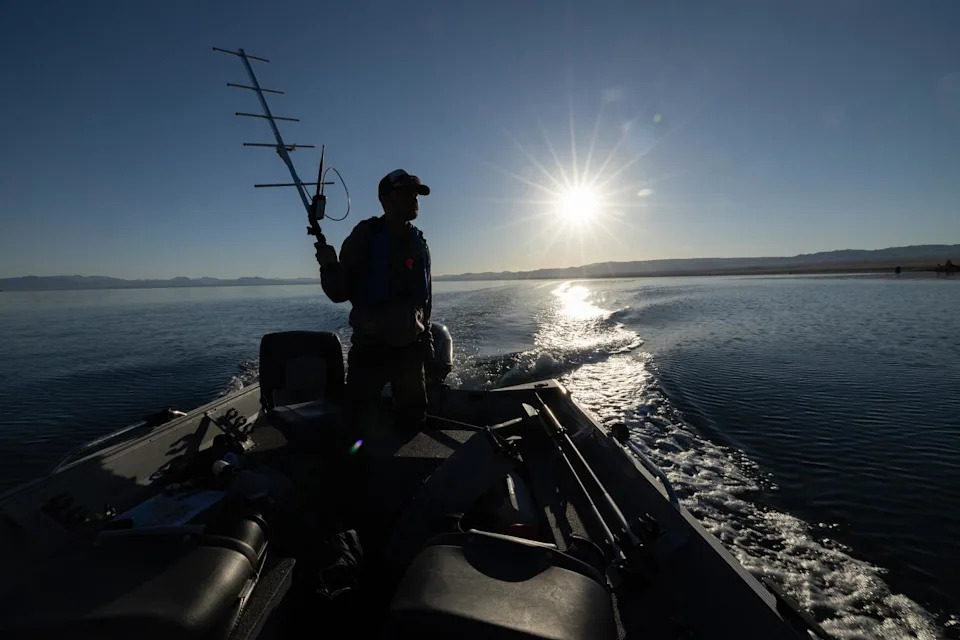
Carle estimated the number of Wilson’s phalaropes at Mono Lake peaked at 18,000 this summer — a relatively good number for recent years, but far fewer than decades ago.
The population has declined since the 1980s, and Carle worries that their saline lakes are increasingly “on life support” and vulnerable to crashing.
Utah’s Great Salt, another critical stopover, declined in 2022 to its lowest level on record, making the water saltier and more difficult for brine shrimp and flies to reproduce. The lake later rose after a heavy snowpack but is now declining again.
Oregon’s Lake Abert has repeatedly dried up, and biologists have found that when it’s desiccated, more phalaropes fly farther south to Mono Lake.

Mono Lake also faces potential threats. Over decades, Los Angeles' reliance on water from nearby creeks lowered the lake level and left exposed its craggy tufa towers, formations of calcium carbonate that grew underwater around springs. Though the lake has risen since 1994, when state regulators ordered L.A. to take less water, Carle said the lower the lake, the less fly habitat there is, meaning less food for phalaropes, so the city could really help the birds by leaving more water for the lake.
“They can't survive without this habitat,” Carle said. “The birds are telling us we need to think of these lakes as a network when we work on conservation.”
He helped draft a 2024 petition urging the federal government to declare the Wilson’s phalarope a threatened species under the Endangered Species Act.
Because their habitats are in trouble, he said, the birds are like “the polar bears of salt lakes.”
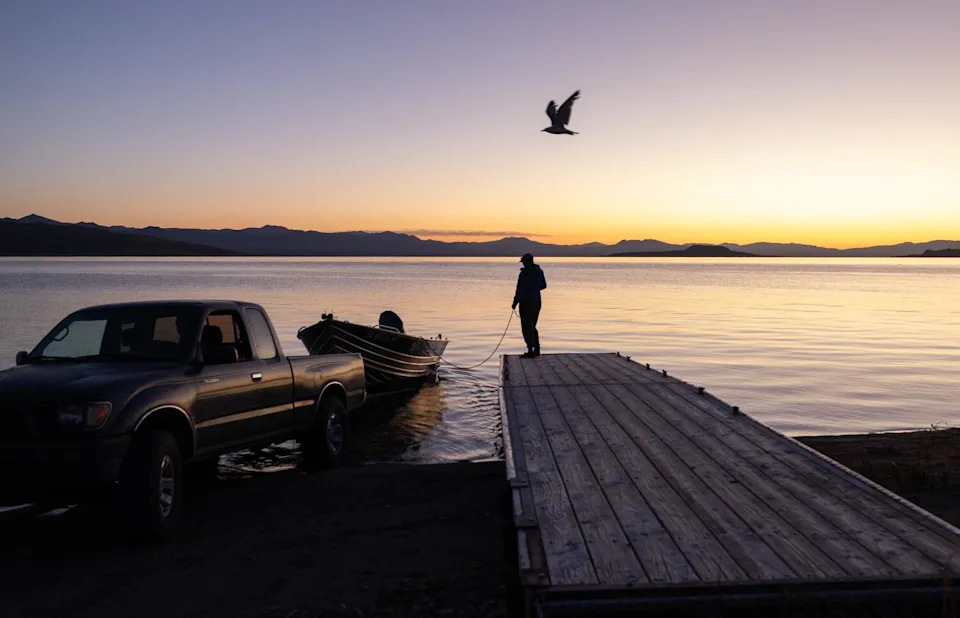
This summer, Carle has continued his research at night, setting out in a motorboat on Mono Lake to catch phalaropes. He and his colleagues use a net to scoop each one out of the water. They glue tiny radio transmitters to their backs and release them.
Over the last week, they have tracked the birds on a digital map crossing Mexico, headed for Andean lagoons in Ecuador and Bolivia.
In September, flocks of phalaropes will arrive in Argentina’s plains and gather at Laguna Mar Chiquita, the largest saline lake in the hemisphere, where they will congregate alongside pink flamingos.
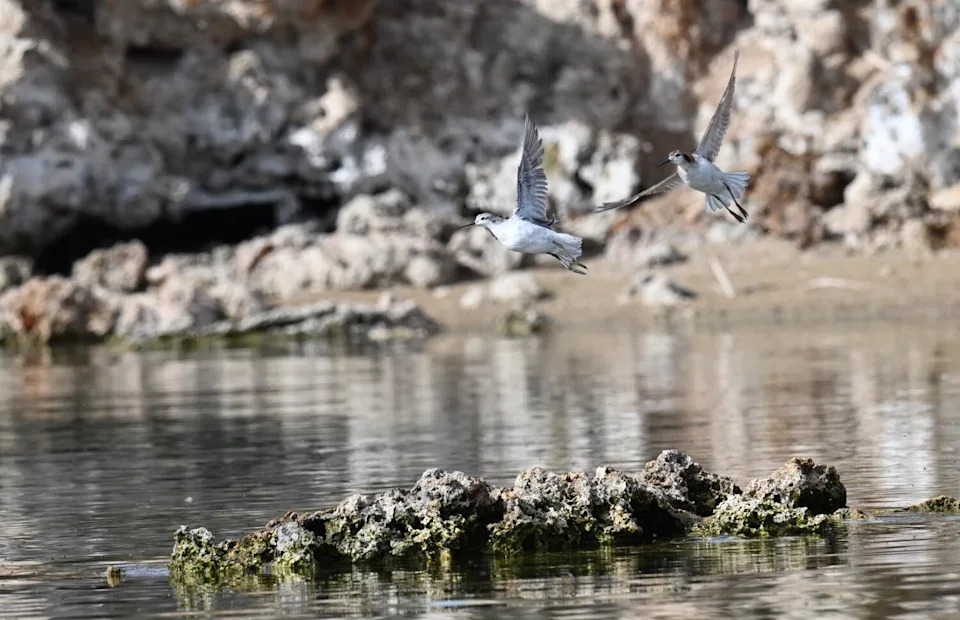
Carle's colleagues have also been tagging the shorebirds in Argentina and Canada. They began collaborating more closely in 2019, when Carle and fellow ornithologist Margaret Rubega invited researchers from across the hemisphere to meet at Mono Lake and launched the International Phalarope Working Group.
Since then, the growing ties among researchers have catalyzed more connections.
In 2022, Carle and conservationists from the nonprofit Mono Lake Committee traveled to Argentina to celebrate a new national park at Laguna Mar Chiquita and the dedication of a mural by Argentine artist Franco "Vato" Cervato Cozza depicting a phalarope with a map of its migratory route.
The following year, Cervato was invited to Mono Lake and painted similar murals in Lee Vining.
Then the community held its first Phalarope Festival, an event featuring talks by scientists and a phalarope costume contest.
Carle wrote a song titled “Me Llaman Falaropo” (to the tune of Manu Chao’s “Me Llaman Calle”) and took the stage to sing alongside an Argentine scientist, strumming a guitar.
I call the saline lakes my home
From California to Argentina
Bolivia to Saskatchewan
Always searching, always swimming, in the shallow waters spinning
I fill my belly full of brine flies …
I know one day we will protect all the places I call home

In Argentina, efforts to study the birds and protect their habitats are led by two sisters, biologist Marcela Castellino and educator Marina Castellino.
The latter runs a youth program called Experience Ambientalia that brings local students to learn about Laguna Mar Chiquita and highlights the international connections among sister lakes.
Talking online with leaders of the Mono Lake Committee, Castellino said she discovered they had the same goal of “connecting saline lakes to protect the ecosystems that the phalaropes need.”
When she had the opportunity to travel to a Mono Lake birding festival in 2022, the idea of expanding the program began to take shape.
Later that year, Santiago Escruceria, who runs the committee's education program at Mono Lake, spoke to students in Argentina, emphasizing that “this little bird depends on us, in a way, for their survival, by us humans understanding the value of the habitats.”
Castellino said the enthusiasm she found at Mono Lake became the platform to build the exchange program.
“It just needed a push, and I'm pushy enough to say, ‘OK, let's do this program in both ends of the hemisphere,’” she said.
In 2024, the first group of five Argentine students traveled to Lee Vining, where they and local students watched phalaropes along the shore, toured creeks and paddled canoes. They tried American hot dogs and spicy Mexican food, showed off their dance moves and camped out in tents.
Argentine student Martina Blangetti later wrote that the experience “showed me that we young people are capable of changing the world and saving our saline lakes.”
In Argentina, California students saw flocks of flamingos and learned that the lake — where Wilson’s phalaropes soon would arrive — is being polluted with sewage and plastic trash.
At both lakes, students who've gone through the program have become interns and volunteers. Some say they want to be park rangers. And some, like Martínez, are interested in becoming biologists.
Marina Castellino said these ties and friendships exist thanks to the phalaropes, which she sees as “ambassadors” for saline lakes.
“This small gray bird is mobilizing communities in a way I have never seen,” she said, and it has become “this beautiful motivation to protect our lakes.”
Even though salt lakes are shrinking, she said she now feels hopeful whenever she sees the phalaropes bobbing on the water.
She is organizing another festival in Argentina in December, when the phalaropes will be soaring over the lake by the thousands. And once again, she and others plan to sing the song in honor of the birds, celebrating their return.
This story originally appeared in Los Angeles Times.








Comments